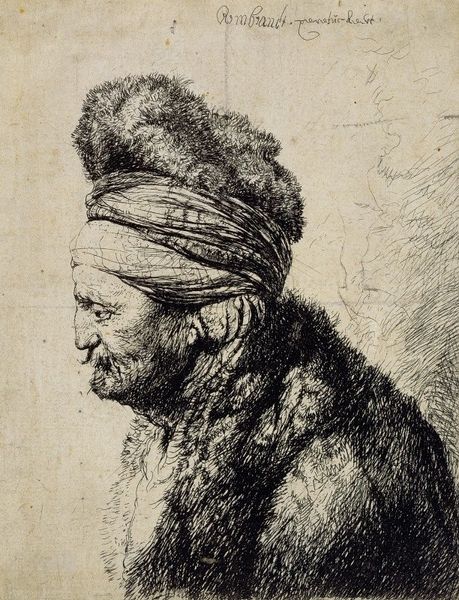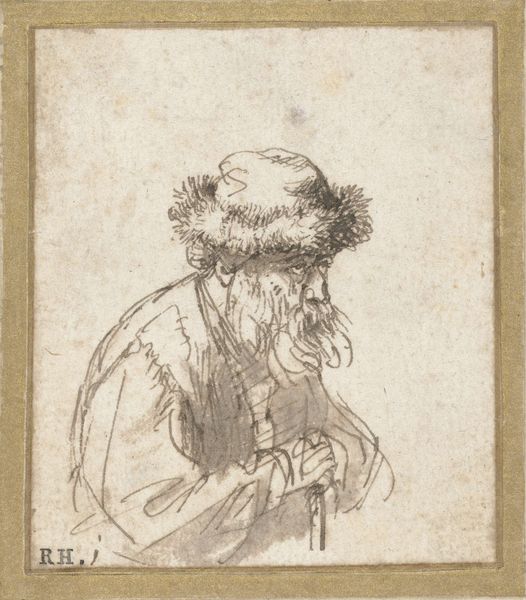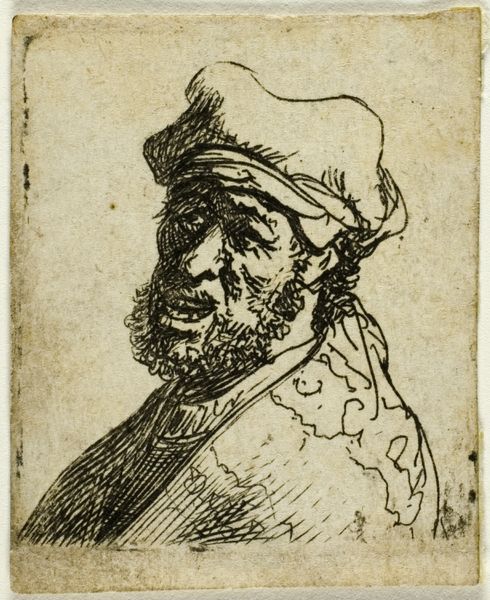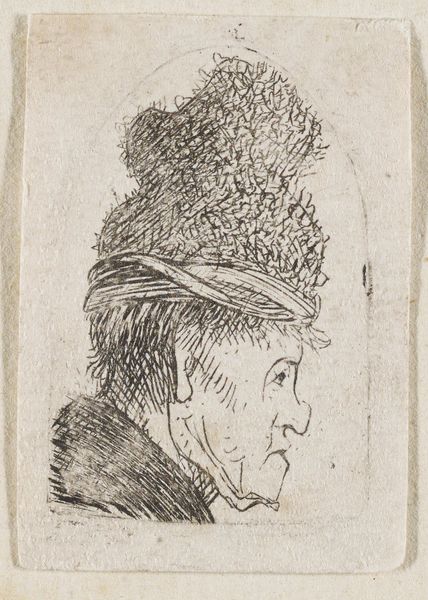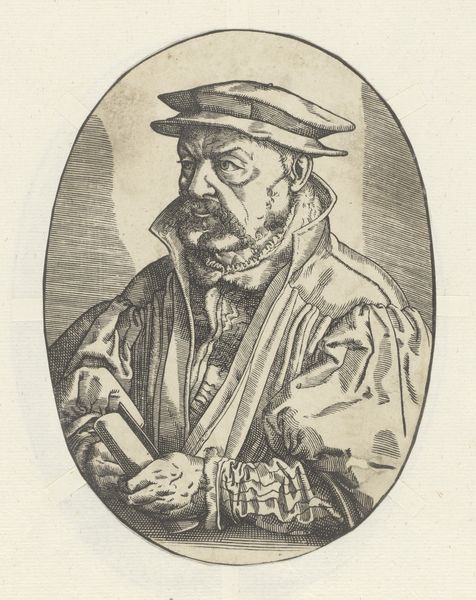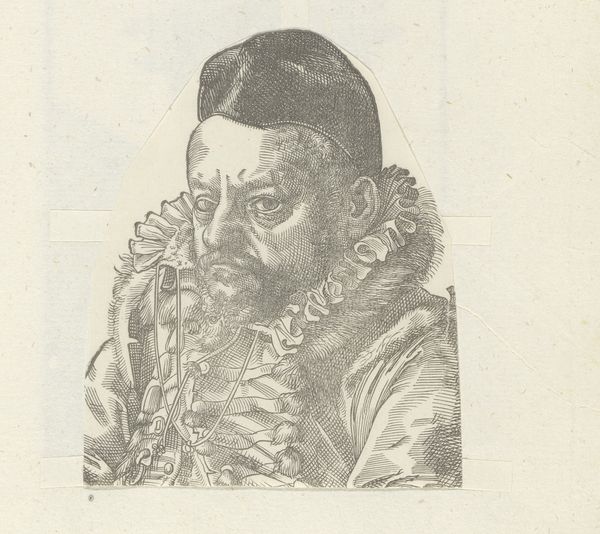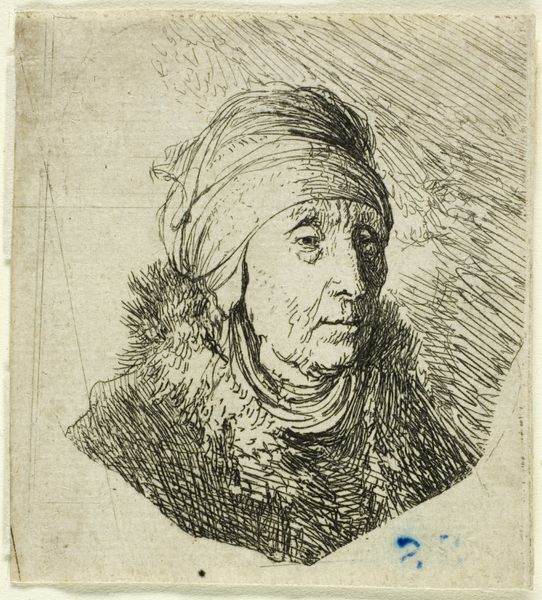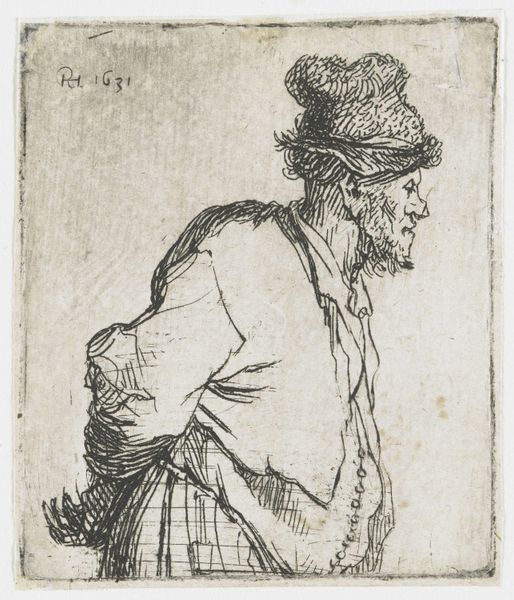
drawing, paper, ink
#
portrait
#
drawing
#
baroque
#
figuration
#
paper
#
ink
#
portrait drawing
#
academic-art
Copyright: Public Domain: Artvee
Editor: This is Rembrandt van Rijn's "Old man in fur coat and high cap, bust" made between 1629 and 1632, using ink on paper. It has a compelling texture because you can almost feel the weight and depth of the fabrics through the artist's quick strokes. What do you see when you look at this portrait? Curator: What immediately strikes me is the performative aspect of Rembrandt's portraits. The materiality of the ink and paper become less about accurate representation and more about staging a character. Notice the fur coat – not just an article of clothing, but a marker of status, potentially theatrical costume sourced from his studio’s prop collection. Editor: So, you’re saying that Rembrandt might not have been trying to depict this old man faithfully? Curator: Precisely. Consider the labor involved: the sourcing of materials, the time spent rendering these textures with ink, and even the model’s role. It suggests an economy of image production at play. Were these materials expensive? Who supplied the paper and ink? Editor: That's a great point, especially thinking about the relationship between Rembrandt, his patrons, and the larger society that consumed his work. Was there a market for these sorts of portraits? Curator: Absolutely! Portraiture was, then as now, deeply tied to social and economic forces. Think about who commissioned portraits – the rising merchant class eager to solidify their status through material display, made possible through art like this drawing. It blurs the line between representation and participation in that market, doesn't it? Editor: I see how focusing on the materials and production methods opens up the image. Now, I understand the portrait isn’t just about depicting a person. It also gives clues to the social and commercial networks surrounding Rembrandt’s practice. Curator: Precisely. It's a window into the complex exchange between artist, materials, and the consumers of art in 17th century Holland.
Comments
No comments
Be the first to comment and join the conversation on the ultimate creative platform.



